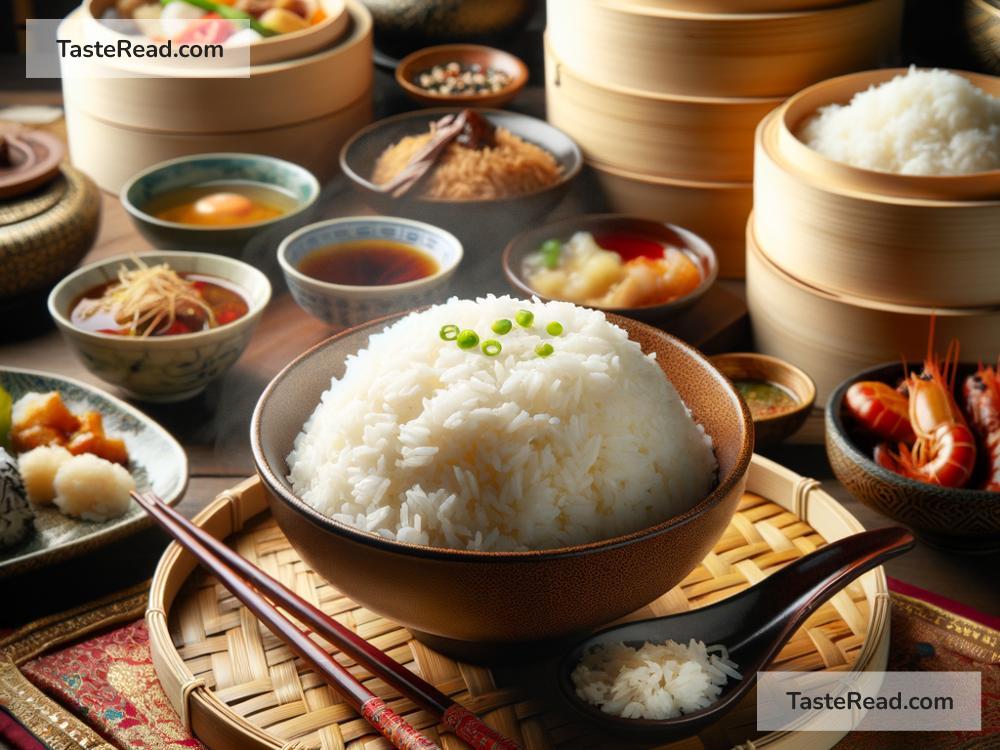The Cultural Significance of Rice in Asian Cuisines
Rice is much more than just food in many Asian countries—it’s a symbol of history, culture, tradition, and even identity. Across Asia, rice holds a special place in the hearts of people, influencing the way they eat, celebrate, and share their heritage. This humble grain has shaped lives, communities, and entire civilizations for thousands of years.
A Staple Food for Centuries
Rice is one of the oldest crops cultivated by humans, with its roots tracing back to around 8,000 years ago in China and Southeast Asia. Over time, rice farming spread across Asia, becoming an essential part of daily life. Today, rice is the primary food for over half the world’s population, and most of those people live in Asia.
In many Asian countries, rice is not just seen as a source of nourishment but as a gift from nature. Farmers put immense effort into growing rice, often using traditional methods that connect them to their ancestors. Rice cultivation is more than a job—it’s a heritage.
Rice as a Cultural Icon
Rice symbolizes prosperity, fertility, and sustenance in many Asian cultures. In India, Japan, China, Thailand, Vietnam, and other countries, rice is deeply associated with ritual and religion. For example, in Hindu traditions, rice is offered to gods during prayers and ceremonies. In Japan, rice is tied to Shinto beliefs, with festivals celebrating harvest times and thanking the gods for their blessings.
Rice also plays a significant role in important life events like weddings, births, and funerals. In Vietnam, sticky rice is often part of traditional ceremonies, while in Thailand, rice dishes are served during festivals to foster unity and goodwill among communities. The simple act of sharing rice expresses love and care, uniting families and larger groups.
Variations of Rice in Asian Cuisines
One of the fascinating aspects of rice is how diverse it becomes when prepared in different kitchens across Asia. Each country has its own way of elevating rice as the star ingredient. Let’s explore how rice shines in Asian cuisines:
-
China: In Chinese cuisine, rice is a staple that accompanies almost every meal. Fried rice is a beloved dish, often cooked with vegetables, eggs, and meat. Steamed white rice serves as the foundation for countless other foods, acting as a neutral base to balance bold flavors.
-
Japan: In Japan, rice (called gohan) is sacred. It’s used to make sushi, rice balls (onigiri), and rice cakes (mochi). Steamed rice is part of daily meals, while special dishes like takikomi gohan (seasoned rice) are made on festive occasions.
-
India: Basmati rice is prized in Indian cuisine, especially when making biryani—an aromatic, flavorful rice dish cooked with spices, meat, or vegetables. South India is known for its rice-based dishes such as idli and dosa, made from fermented rice batter.
-
Thailand: Thai cuisine features jasmine rice, known for its fragrant aroma. Rice is used in curries, fried rice, soups, and desserts like mango sticky rice, a sweet treat loved by many.
-
Vietnam: Rice plays a starring role in Vietnamese dishes like pho (a noodle soup made from rice noodles) and spring rolls (wrapped in rice paper). Sticky rice varieties, such as xôi, are popular during special occasions.
-
Korea: Rice in Korea is placed at the center of every meal, alongside side dishes (banchan). Bibimbap, a mixed rice dish with vegetables, meat, and egg, showcases the versatility of rice in Korean cuisine.
-
Indonesia and Malaysia: These countries celebrate rice in dishes such as nasi goreng (fried rice) and nasi lemak (rice with coconut milk, served with sambal, boiled egg, and side dishes).
-
The Philippines: Rice in the Philippines features in savory dishes like sinigang (a sour soup served with steamed rice) and sweet treats such as suman (sticky rice wrapped in banana leaves).
A Shared Cultural Connection
For many Asian families, rice is more than a meal—it’s a symbol of home and togetherness. Eating rice at the dinner table often comes with stories, laughter, and memories passed down through generations. It’s a reminder of the strong bonds between food and family.
Even when people migrate from Asia to other parts of the world, rice remains a comforting anchor of their heritage. Recipes for fried rice, sushi, biryani, or rice cakes are lovingly passed down to preserve cultural identities. Rice transcends borders, reminding people of their roots no matter where they are.
Respect for Rice
In Asia, wasting rice is often considered disrespectful. Many communities view rice as sacred because it sustains life. Parents teach children to appreciate rice, not just as food but as a representation of hard work, teamwork, and dedication. Every grain of rice carries the legacy of farmers, ancestors, and generations who depended on it.
Conclusion
Rice is not just food; it’s culture, history, and love. Across Asia, it connects people to their traditions and provides a sense of identity. Whether it’s a comforting bowl of steamed rice, an intricate biryani, or sweet sticky rice, this grain continues to bring joy to millions. By understanding the cultural significance of rice in Asian cuisines, we can appreciate not only its flavor but also the deep meaning it holds in people’s lives.


